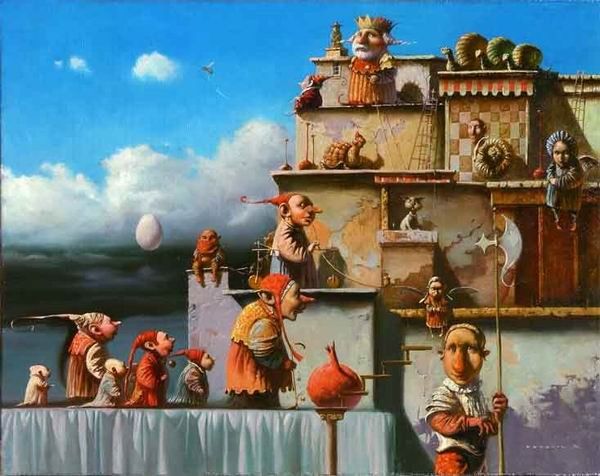
PRINCIPIA SCACCHORUM, Part 3: The Origins of Wood Pushing in Chess
Standing on the borderline between game, art, science and sport, chess is not only one of the greatest intellectual delights, but also a perfect paradigm for teaching and learning certain mental skills citizens of the 21-st century need to become successful, independent and productive in an increasingly complex and fast changing world. Unfortunately, the traditional teaching method has been keeping millions out of the game to reap these benefits. To replace an outdated and ineffective early education in chess we need a modern revolutionary breakthrough. For this to happen it is therefore absolutely necessary to revisit the true chess basics, Principia Scacchorum, in order to be able to design a strong and effective early chess learning system for effective participation in the best game ever invented by humans so far...
We saw last time how proper mindset (not technicalities of the trade!) makes us victorious. Let us now have a look at what kind of mindset the early traditional teaching leaves in the brain of the chess beginner. Here is the all too familiar situation, from an excerpt by GM Gregory Serper:
"I cannot tell you, my dear readers, how many times I've had this conversation with my younger students while we analyze their games:
"What did you try to accomplish with your last move?"
"Nothing!"
"Then why did you play it?"
"I don't know!"
(The Art of Doing Nothing, chess.com, Mar 17, 2014)
This situation is so widespread, so endemic, that it casts a dark shadow over effectiveness of early teaching the way it has been, well, since the dawn of chess. Now if you saw a football player kicking the ball randomly in the air, totally oblivious of how his team mates and the opposing team's players are positioned, and all this after months of practicing, you would be shaking your head in amazement and disbelief.
Yet the chess community is readily accepting almost equivalent situation (of making aimless moves) in chess just as normal as the Sun is coming up in the East every morning. Which is to say the chess community seems to be in a SNAFU state...
The fundamental question here is what is causing this near-blindness and cluelessness with 99.5% of all those who learn the moves and, sadly, stop growing?
The answer is: failure to acquire the most important skill of all chess, how to spot and understand patterns of relationships between pieces. Unless we learn about how pieces interact we cannot hope to understand how chess works.
"The relationships between things are more important than the things themselves." Georges Braques
Once we grasp how network of chess pieces and structure they create function, taking the right direction as to what to do over the board will emerge as a natural, and often, straigthforward conclusion.
Now that we identified where the all-too-common problems of poor board vision and pushing wood come from, we should ask, quite naturally, what we could possibly do to replace the "flawed" (Nimzovich, 1929) traditional teaching approach with the moves? All indications suggest that we should get started with piece relationships, not individual moves. But how?
It is true, chess has been taught with the moves first, before anything else, since time eternal. But sometimes comes time to challenge deeply established "eternal truths."
With a new and superior teaching method we may finally experience that Copernican moment, well, it is really not the Sun circling round the Earth, it is quite the opposite...
Tags: chess basics, chess fundamentals, board vision
Previous posts:
art Milorad Dobric, from a chess primer in Serbo-Croatian "Chess - The Game of Millions" by Dragoslav Andric
